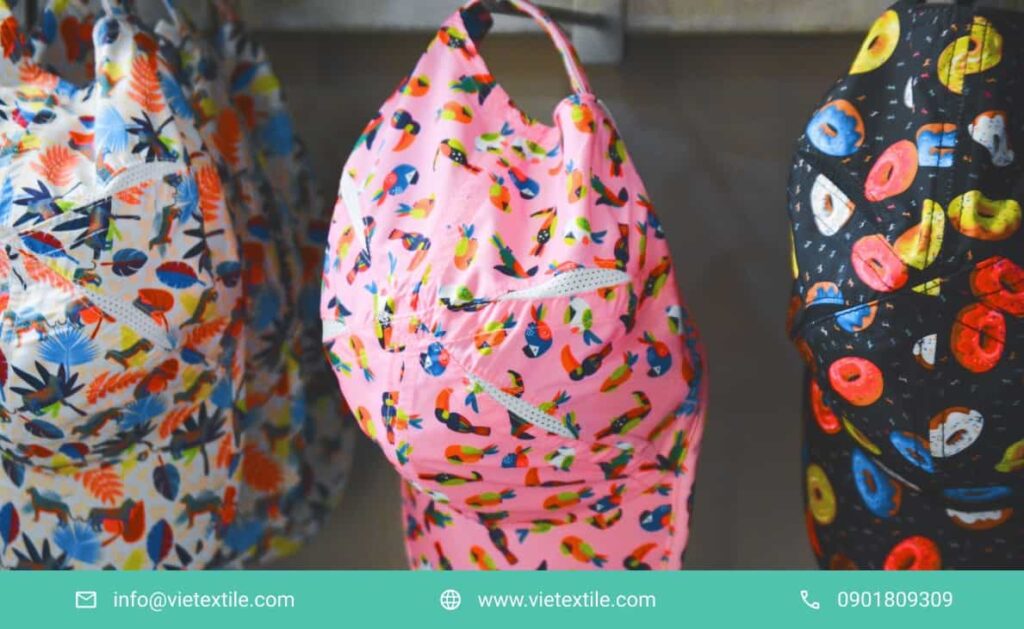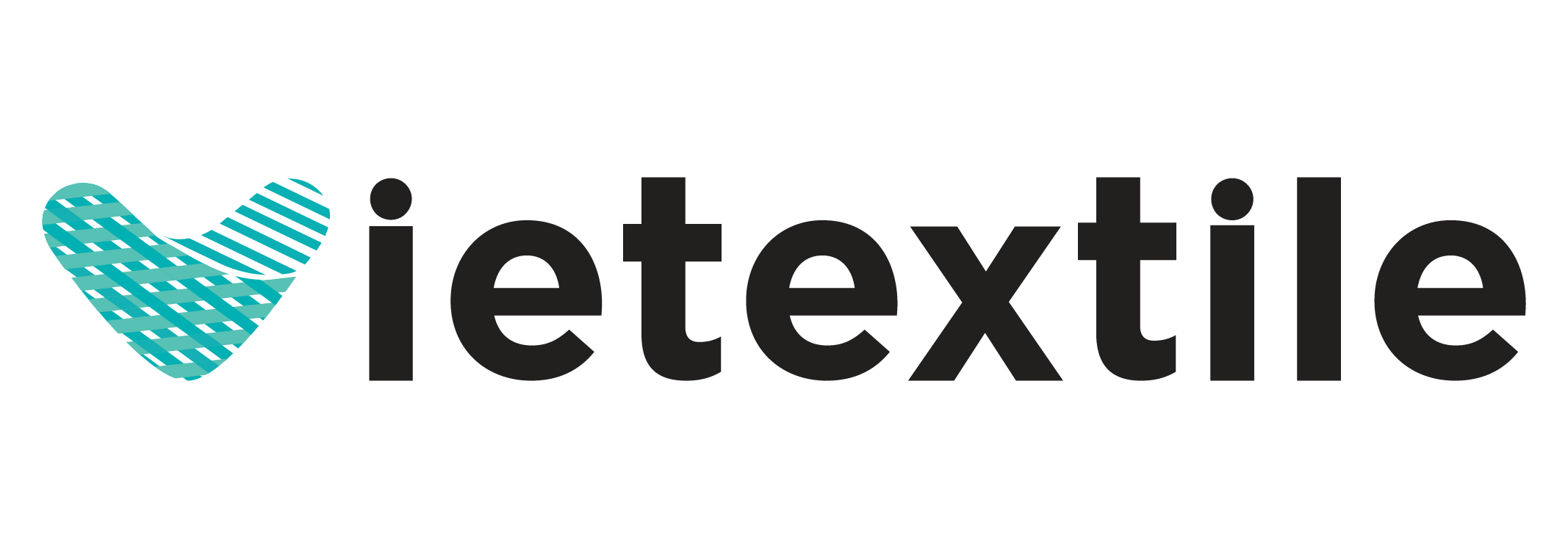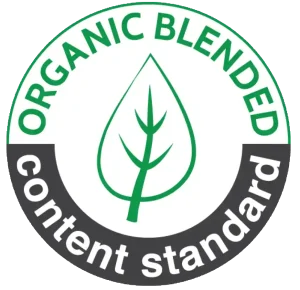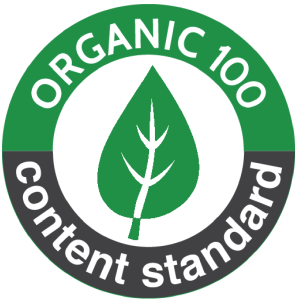Vietnam has solidified its status as a pivotal global hub for textile manufacturing and garment production, transitioning from a low-cost assembly point to a sophisticated, vertically integrated partner capable of handling complex digital textile processes. For international fashion and apparel brands seeking agility, supply chain diversification, and quality execution of high-resolution, complex textile designs, outsourcing to a direct to fabric Vietnam factory presents a compelling strategic advantage.
This process, however, requires more than just finding a manufacturer; it demands a deep understanding of the local operational environment, technology synchronization, and adherence to the increasingly rigorous global compliance standards.
Digital Direct to Fabric (DTF) printing has revolutionized textile sourcing by enabling fast prototyping, reduced inventory risk, and personalization, moving beyond traditional screen printing constraints. The shift to a direct to fabric Vietnam factory allows brands to capitalize on lower labor costs, preferential trade agreements (such as the CPTPP and EVFTA), and a growing pool of technical expertise in color management and chemical handling.
Yet, successful outsourcing depends on meticulous planning, particularly concerning pretreatment chemical compatibility (Reactive, Disperse, or Pigment systems), fixation reliability, and the factory’s commitment to environmental, social, and governance (ESG) standards.
This comprehensive technical and strategic guide is designed for sourcing managers, product developers, and supply chain executives. It provides an in-depth framework for evaluating, integrating with, and managing a high-performance direct to fabric Vietnam factory, ensuring superior print quality, consistent color fidelity, and full compliance with international regulatory bodies.
We detail the critical steps from initial supplier audit to final product shipment, emphasizing the technical due diligence required to unlock Vietnam’s full potential in digital textile manufacturing.

1. The Strategic Advantage of a Direct to Fabric Vietnam Factory
Nội dung tóm tắt
ToggleVietnam’s position in the global supply chain offers specific, quantifiable benefits that drive major brands to relocate or expand their digital printing capacity here.
1.1. Geopolitical and Economic Stability
Vietnam offers a stable political and economic environment compared to some competing textile hubs. This stability is critical for long-term sourcing strategies and mitigating supply chain risks.
- Trade Agreements: Access to vast markets is streamlined through major free trade agreements. The Comprehensive and Progressive Agreement for Trans-Pacific Partnership (CPTPP) and the EU-Vietnam Free Trade Agreement (EVFTA) provide preferential tariffs, making Vietnamese-made textiles highly competitive in major Western markets.
- Vertical Integration Potential: The local textile industry is increasingly integrated, meaning a direct to fabric Vietnam factory can often source quality yarns, knit/weave the fabric, print digitally, and cut/sew the garment all within a close geographic radius, dramatically shortening lead times.
1.2. The Skilled Labor Pool and Technical Adaptation
While Vietnam initially benefited from low labor costs, the advantage now lies in the growing technical proficiency of its workforce in handling digital technology.
- Digital Expertise: The labor force is highly adaptable to modern digital equipment (e.g., high-speed industrial printers like Reggiani, Durst, and MS), and factory technicians are increasingly adept at managing complex RIP software, ICC profiling, and chemical preparation specific to DTF.
- Speed to Market: The ability of a direct to fabric Vietnam factory to rapidly process small to medium-sized orders, handle complex colorways, and adapt to design changes within a matter of days gives international brands the agility required by the “fast fashion” and “on-demand” retail models.
1.3. Cost Structure vs. Value Proposition
The cost advantage is no longer purely labor-driven but arises from operational efficiency and scale.
- Optimized TCO (Total Cost of Ownership): While the raw ink cost may be similar globally, a direct to fabric Vietnam factory benefits from lower energy costs (relative to some developed economies) and lower overhead for large-scale operations, translating into a competitive TCO per meter of printed fabric.
- Risk Mitigation: By decentralizing production from a single geographical region (the China-plus-one strategy), brands enhance resilience against unforeseen disruptions like natural disasters or trade conflicts.
2. Technical Due Diligence: Evaluating the Direct to Fabric Vietnam Factory
International brands must conduct rigorous technical audits focused on the factory’s ability to execute digital printing to the required standard. This goes far beyond general garment assembly audits.
2.1. Ink Chemistry Synchronization – The Foundation of Quality
The brand must mandate the specific ink chemistry based on the fabric being printed and the required end-use performance.
- Reactive System Vetting (Cotton/Cellulose):
- Pre-treatment Formulation: Verify the factory’s exact recipe for alkali (pH control) and humectants (urea concentration). Inconsistent pre-treatment is the single largest cause of color inconsistency and low fixation.
- Steaming Uniformity: Audit the steamer to ensure temperature uniformity (\mathbf{100–102^{\circC saturation) and consistent dwell time across the full width of the fabric. Inefficient steaming leads to excessive hydrolyzed dye and poor fastness.
- Disperse System Vetting (Polyester/Synthetics):
- Curing Temperature Control: Calibrate the curing oven or rotary calender. Temperature variance of just \mathbf{\pm 5^{\circC can lead to incomplete dye sublimation or fiber scorching.
- Cleaning Cycle: Verify the post-wash or clearing wash process is adequate to remove surface-level unfixed disperse dye, preventing later migration or back-staining.
- Pigment System Vetting (Blends/Universal):
- Binder Quality: Demand the use of MRSL-compliant, high-performance binders that minimize the stiffness (hand-feel) while maximizing wash fastness.
- Curing Consistency: Ensure the curing time and temperature are precise for proper binder cross-linking, which is critical for the print’s durability.
2.2. Color Management and ICC Profiling
Color fidelity is the hallmark of digital printing. Brands must verify the factory’s color management protocols.
- Equipment Calibration: The direct to fabric Vietnam factory must possess a high-end spectrophotometer (e.g., X-Rite) and routinely calibrate it.
- ICC Profile Validity: Request proof that the factory builds and uses custom ICC profiles generated specifically for the combination of: (1) Ink set, (2) Printer model, (3) Fabric base (e.g., 10oz cotton twill vs. poly chiffon), and (4) Pre-treatment chemical lot. Using generic profiles is unacceptable for premium brand quality.
- Delta E Testing: Implement a mandatory \DeltaE (Delta E, color difference) tolerance for all production runs, typically \mathbf{\Delta\mathbf{E < 2.0 against the master color standard (Lab value).
2.3. Water and Energy Infrastructure
The capacity to handle the “wet” process is crucial for Reactive and Acid printing.
- Water Treatment: The factory must utilize robust water softening and deionization (DI) systems, as hard water contamination severely compromises Reactive and Acid dye performance.
- ETP Capacity: Audit the Effluent Treatment Plant (ETP). Its capacity must match or exceed the printing volume, and its chemistry must be adequate to treat the specific chemical load (high COD, high Total Nitrogen if using urea).
3. Compliance and Sustainability Mandates

Global brands demand that their partners adhere to stringent environmental, social, and chemical compliance standards. These are often non-negotiable prerequisites for outsourcing to a direct to fabric Vietnam factory.
3.1. Chemical Management (ZDHC and MRSL)
The Zero Discharge of Hazardous Chemicals (ZDHC) Manufacturing Restricted Substances List (MRSL) is the industry standard for eliminating hazardous chemicals from the manufacturing process.
- Supplier Verification: Brands must insist the direct to fabric Vietnam factory uses only ZDHC Gateway approved inks and pre-treatment auxiliaries. This requires the factory to track the chemical inventory and verify that all inputs (inks, thickeners, softeners, acids, alkalis) meet Level 1, 2, or 3 conformance.
- Azo Dyes and Heavy Metals: Specifically verify that the factory’s ink set is free from banned Azo dyes that can cleave to form carcinogenic amines, and that heavy metal content is below regulatory thresholds.
3.2. Product Safety (OEKO-TEX Standard 100)
This standard ensures the final product is safe for human use.
- Certification Scope: The brand should require the direct to fabric Vietnam factory to maintain OEKO-TEX Standard 100 certification for their specific process flow. This certifies that the final printed fabric is free from harmful levels of several hundred substances.
3.3. Social and Labor Compliance (SMETA, SA8000)
Beyond chemical compliance, social audits are mandatory to ensure ethical sourcing practices.
- Audit Protocols: Brands must implement standard social accountability audits (e.g., SMETA, SA8000) to verify fair wages, safe working conditions, restricted working hours, and the prohibition of child or forced labor. This is especially sensitive in the fast-paced textile production environment of any direct to fabric Vietnam factory.
4. Outsourcing Workflow: From R&D to Shipment
A structured five-phase workflow ensures seamless integration of the international brand’s needs with the capabilities of the direct to fabric Vietnam factory.
4.1. Phase 1: R&D and Sampling (The Digital Handshake)
- Design File Preparation: Brands must supply designs in optimal format (e.g., TIFF or PSD with embedded color profiles) and specify the desired print resolution (e.g., 600×600 dpi or 1200×1200 dpi).
- Strike-Off Protocol: The factory must produce a “Strike-Off” (a sample print) using the exact final production conditions (pre-treatment, ink, printer, fixation). The brand then approves the color (\DeltaE check) and hand-feel.
- Data Loop: The digital file, the factory’s process parameters, and the approved physical strike-off are locked down in a database to ensure future bulk production matches the sample.
4.2. Phase 2: Production Scaling and Quality Gates
- Batch Integrity: The factory must implement batch control for pre-treatment chemicals (pH testing every new batch) and ink (viscosity and temperature monitoring).
- Pilot Run: A small initial production run (e.g., 500 meters) is processed to confirm the scale-up does not introduce new variances (such as center-to-edge color differences across the fabric roll).
- Continuous Monitoring: Implement in-line or near-line quality control. For example, using a densitometer to check color bar patches every 100 meters of fabric ensures consistency without waiting for the end of the roll.
4.3. Phase 3: Post-Treatment and Finishing Control
The most critical post-print stages for quality control.
- Washing Efficiency: For Reactive and Acid prints, residual alkali/acid and unfixed dye must be removed. The brand should demand a final \mathbf{pH check on the washed fabric (target \mathbf{pH 5.5–6.5) and perform a Wet Rub Fastness Test (Crocking) on a statistically significant sample size. Poor results here indicate inadequate washing.
- Softness/Hand-Feel: After the chemical and heat treatment, softeners are applied. The brand must specify the target hand-feel and verify the factory uses only MRSL-compliant softening agents.
4.4. Phase 4: Final Quality Check and Testing
- Physical Testing: Perform standard AATCC or ISO tests on the finished printed fabric from the bulk run: Wash Fastness (AATCC 61), Crocking/Rub Fastness (AATCC 8), and Light Fastness (AATCC 16). These tests confirm the print durability meets the product’s intended use (e.g., swimwear requires high chlorine resistance).
- Defect Grading: Establish a strict fabric defect grading system (e.g., Four-Point System) to categorize and reject rolls with print flaws like banding, broken dots, or color streaks caused by printer nozzle failure.
4.5. Phase 5: Logistics and Traceability
- Traceability: Each roll of printed fabric must be clearly marked with the unique job ID, date, batch number, and a record of the ink and chemical lot numbers used. This is vital for quick root cause analysis if a performance issue arises later in the supply chain.
- Packaging and Shipment: Ensure packaging protects the sensitive digital print surface (e.g., wrapping in plastic film and core support) and meets the brand’s sustainability mandates (e.g., using recycled or minimal packaging materials).
5. Overcoming Operational Challenges in a Direct to Fabric Vietnam Factory
Despite the strategic advantages, international brands face specific operational hurdles when partnering with a direct to fabric Vietnam factory.
5.1. Managing Printhead Reliability and Maintenance
Industrial digital printheads (the core technology) are highly sensitive and require specialized maintenance.
- Downtime Mitigation: Brands must verify the factory has a robust maintenance protocol (daily flushing, weekly deep cleaning) and maintains an inventory of spare parts (dampers, caps, and spare printheads) to minimize costly downtime, which directly impacts lead times.
- Ink Compatibility: The factory must maintain strict purity levels for inks and flushing solutions. Contamination is the leading cause of printhead failure.
5.2. Dealing with Residual Chemicals and Fume Management
The fixation process generates fumes that must be managed responsibly.
- Formaldehyde: If the factory uses older or lower-cost pigment binders, there is a risk of formaldehyde release during curing. Brands must demand factories use low- or non-formaldehyde release binders and ensure the curing oven is equipped with adequate air extraction and filtration.
- Urea Byproducts: Steaming of Reactive prints releases ammonia (from urea), which must be properly vented and treated.
5.3. Communication and Technical Gap
Language and cultural differences require specialized attention to technical communication.
- Dedicated Technical Liaison: Brands should appoint a dedicated bilingual technical liaison who understands both digital printing chemistry and local factory practices to manage the color and quality control interface effectively.
- Standardized Reporting: Implement standardized, digital production reporting systems (e.g., a shared digital dashboard) to track critical process parameters (PU%, Steam Time, Curing Temp, \DeltaE scores) in real-time, bridging the communication gap.
6. Strategic Growth and Future Investment

The future competitive edge for a direct to fabric Vietnam factory lies in embracing advanced technology and sustainable practices.
6.1. Single-Pass Printing and Speed
The market is moving toward high-speed, single-pass inkjet technology, which offers printing speeds comparable to rotary screen printing.
- Investment Strategy: Brands should prioritize direct to fabric Vietnam factory partners that are investing in these next-generation single-pass machines, as they offer the highest volume output and lowest cost-per-meter in the long run.
6.2. Water Conservation Technologies
Given the growing global pressure on water resources, future partnerships will favor factories demonstrating innovation in water conservation.
- Closed-Loop Systems: Investment in advanced membrane filtration and reverse osmosis (RO) systems to recycle and reuse water from the washing range.
- Pigment Optimization: Shifting more production to Pigment inks where feasible, exploiting the inherent “dry” process advantage to minimize water dependency.
6.3. Digital Traceability and Supply Chain Transparency
Brands are increasingly using blockchain and other digital tools to track every step of the garment’s lifecycle.
- Data Integration: A forward-thinking direct to fabric Vietnam factory must be able to digitally integrate its production data (ink used, meterage printed, compliance reports) directly into the brand’s supply chain transparency platforms.
7. Financial and Logistical Framework for Outsourcing to a Direct to Fabric Vietnam Factory
Successful outsourcing hinges not only on technical quality but also on mastering the financial terms and complex cross-border logistics inherent in working with a direct to fabric Vietnam factory.
7.1. Pricing Model Negotiation
Brands must move beyond simple per-unit cost and establish a Total Cost of Ownership (TCO) model that allocates risk fairly.
- Cost-Per-Meter (CPM) vs. All-in-One:
- CPM: Typically includes printing, ink, and post-treatment (steaming/curing). This is preferred when the brand supplies the Greige (unprinted) fabric. The brand must clearly define the maximum acceptable ink coverage to prevent hidden surcharge disputes.
- All-in-One: Includes fabric sourcing, printing, and finishing. This simplifies the supply chain but requires the brand to exercise extremely rigorous oversight on fabric quality and compliance certifications of the raw material supplier.
- Volume Tiers and Discounts: Negotiate tiered pricing based on annual commitment or print run volume. The pricing should reflect the economies of scale that a high-volume direct to fabric Vietnam factory achieves with industrial ink bulk purchases.
- Surcharge Transparency: Clearly define and cap surcharges for small-lot runs, rush orders, or designs requiring exceptionally high ink density (High Pass printing), which consumes more time and ink.
7.2. Inventory and Supply Chain Integration
Integrating the brand’s inventory management system with the factory’s production planning is vital for Just-in-Time (JIT) manufacturing.
- Forecast Accuracy and Commitment: Brands must provide reliable 6-12 month rolling forecasts. While forecasts are rarely perfect, the direct to fabric Vietnam factory needs this data to secure ink, chemical auxiliaries, and labor capacity.
- Vendor-Managed Inventory (VMI) of Greige Fabric: For high-volume contracts, the brand might place key Greige fabric qualities (e.g., Pima cotton jersey or recycled polyester) under VMI management at the factory. This reduces the factory’s material risk and drastically cuts down lead times, as the base material is immediately available for pre-treatment and printing.
- Minimum Order Quantity (MOQ) Flexibility: Digital printing’s advantage is flexibility. The brand should negotiate lower MOQ tiers (e.g., 100–300 meters) compared to traditional screen printing (often 1,000+ meters), even if it involves a higher CPM premium.
7.3. Cross-Border Logistics and Customs Compliance
Navigating Vietnamese customs and international shipping requires expertise in Incoterms and documentation.
- Incoterms Strategy:
- FOB (Free On Board) Vietnam Port (e.g., Hai Phong or Ho Chi Minh City): This is the most common term. The direct to fabric Vietnam factory covers all costs and risks until the goods are loaded onto the vessel. This gives the brand control over international freight.
- DDP (Delivered Duty Paid): This is the least common but simplest option, where the factory handles all costs, insurance, and duties to the final destination warehouse. This is rarely feasible due to complex foreign tax/duty structures.
- Documentation Accuracy: Vietnamese customs are highly rigorous. All export documentation must perfectly match the physical goods and the commercial invoice. Errors (e.g., misclassifying fabric type, incorrect HTS codes) lead to lengthy delays and demurrage charges.
- Container Loading Optimization: The factory must utilize expertise in maximizing container cubic utilization to minimize shipping costs, especially for bulky, rolled fabric. Ensuring the use of robust roll cores prevents damage during transit.
8. Conclusion: Engineering Excellence with a Direct to Fabric Vietnam Factory
Outsourcing digital direct fabric printing to Vietnam is a sound strategic decision for international brands seeking a balance of cost-efficiency, technical capability, and supply chain resilience. The success of this partnership is not accidental; it is engineered through meticulous technical due diligence. Brands must look beyond the quoted price and critically evaluate the factory’s chemical expertise (Reactive, Disperse, and Pigment systems), their commitment to world-class color management (\DeltaE and ICC profiling), and their unwavering adherence to global compliance standards (ZDHC, OEKO-TEX).
By prioritizing a direct to fabric Vietnam factory that treats digital printing as a precise chemical and technical process, and by establishing a clear financial and logistical framework, international brands can reliably achieve vibrant, high-quality, and compliant textiles, solidifying their competitive edge in the global apparel market.
Partner with VieTextile to access the highest-grade digital inks, chemical auxiliaries, and technical consulting necessary to integrate seamlessly with and elevate the performance of your chosen direct to fabric Vietnam factory.
Contact VieTextile Today for Expert Consultation!
Contact Information:
Hotline: 0901 809 309
Email: info@vietextile.com
Website: https://vietextile.com










